Zoo InternQuest is a seven-week career exploration program for San Diego County high school juniors and seniors. Students have the unique opportunity to meet professionals working for the San Diego Zoo, Safari Park, and Institute for Conservation Research, learn about their jobs, and then blog about their experience online. Follow their adventure here on the Zoo’s website!
The Insect House at the Zoo houses all types of critters, from territorial leafcutter ants to gentle grasshoppers. Here, we met Ms. Ester Chang, a Senior Insect Keeper whose passion for entomology led her to work with numerous exotic insects, while simultaneously helping people find an appreciation for them. She spoke with us about how these insects survive in the wild and what makes them unique.
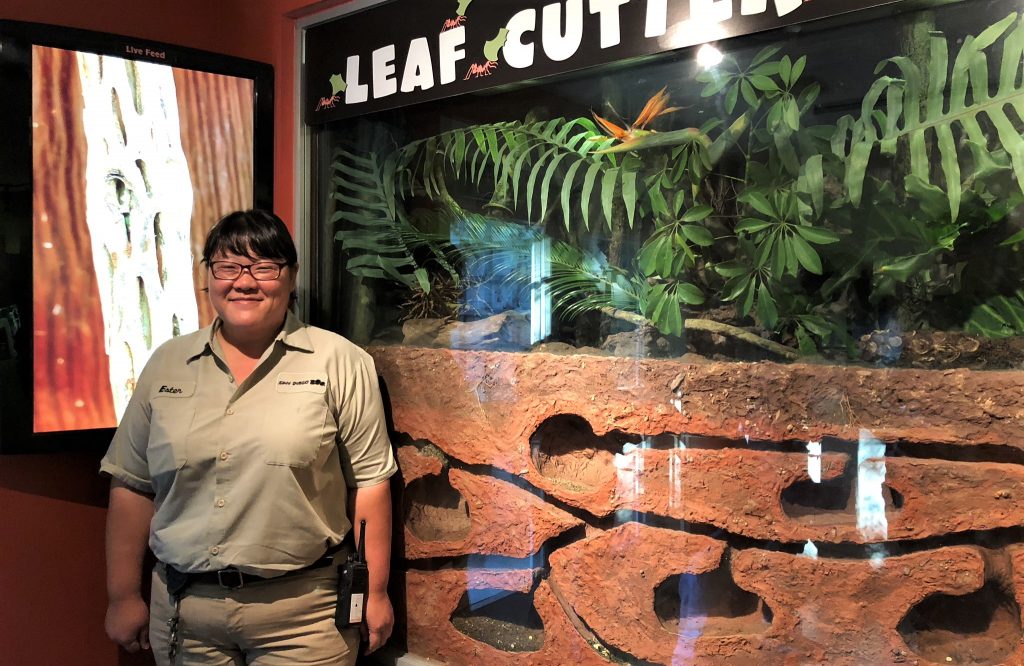
Ms. Chang, who has worked at the Zoo for over ten years, introduced us to the intricate systems of leafcutter ants. Don’t be misled by their size – these fungus farmers can carry heavy plant material using their muscular heads that are made for biting. They are guided by the pheromones of the queen, who stays in the center chamber. Queens cannot be replaced, and once she dies, the entire colony will disperse.
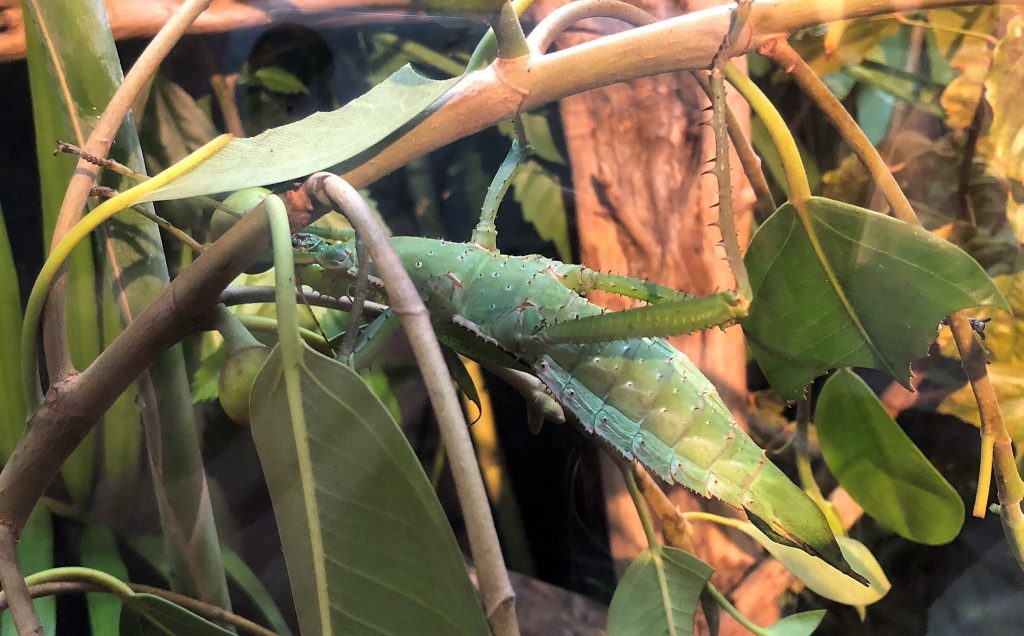
Hidden here is a Jungle nymph. Can you find it? This spiny insect camouflages well alongside the green leaves of its natural habitat in Malaysia, where it specializes in staying still and remaining unnoticed. Eggs take 18 months to incubate and are deposited underground by females using the pointed ends of their abdomens.
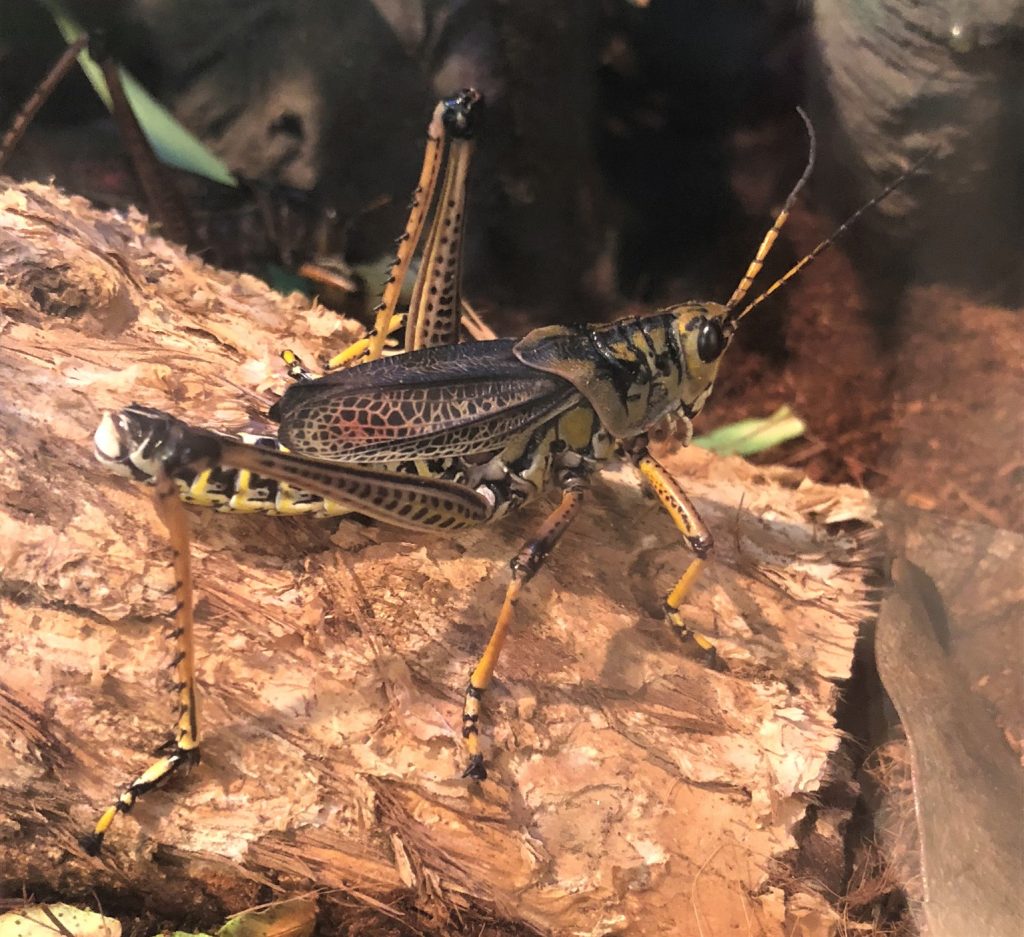
The Eastern Lubber grasshopper is native to our region and munches on leaves and dead insects. It usually stands out against its environment, using bright reds and yellows as warning colors to predators that eating them will bring a world of sickness. Keeping them under control is critical, as too many will wreak havoc on agriculture.

Peruvian fire sticks feed on ferns and may seem calm on the outside, but release a powerful chemical that harms predators if they get too close. While its exhibit may not be an exact replica of its natural environment, keepers always consider what’s best for the insects. This includes specialized diets and ensuring the insects are comfortable.

Giant cave roaches, despite their dirty reputation, spend a solid amount of time grooming and are critical recyclers of the environment who decompose waste products of plants and animals. Without them, decayed plant material would pile up continuously and the soil would be lacking in nutrients.
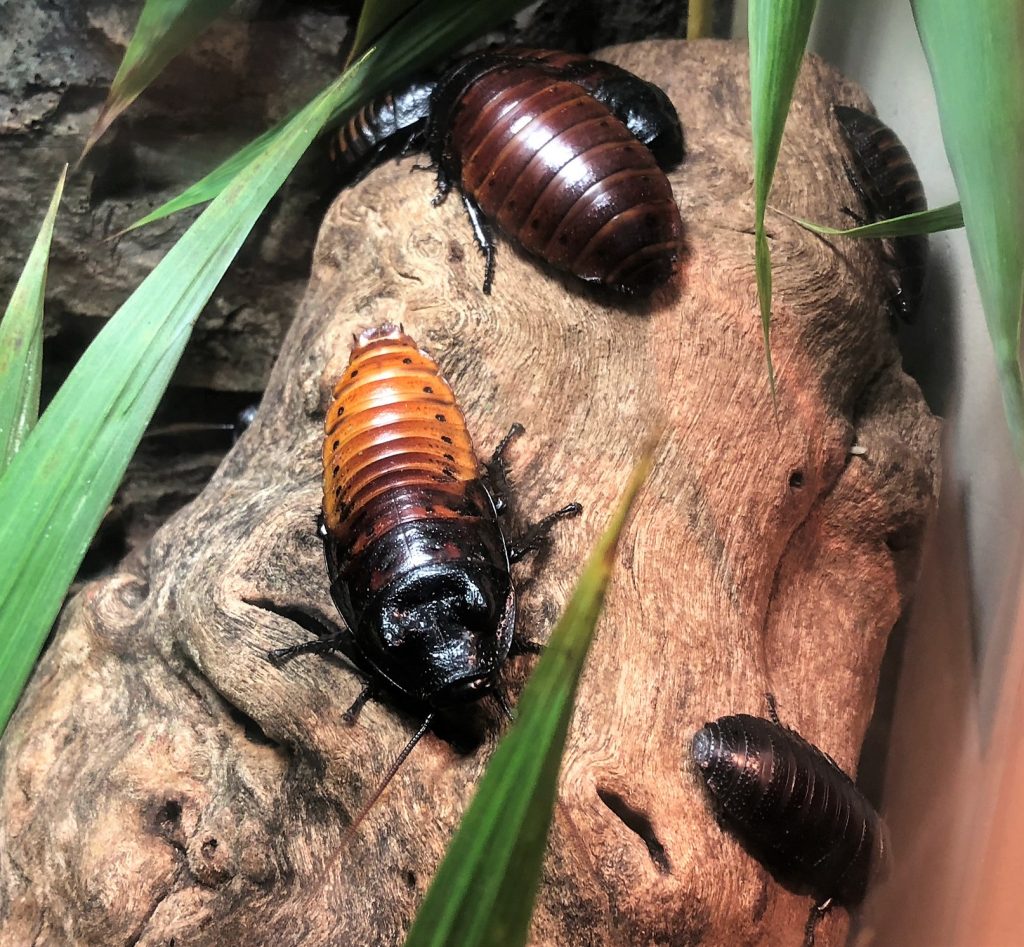
It’s easy to feel a little jittery at the sight of a hissing cockroach, but without these decomposers, our ecosystems would have a very difficult time functioning. They feed on rotting fruits, vegetables, and decomposing animal matter. The loud warning sound they are known for is made by quickly blowing air through breathing tubes, known as spiracles.
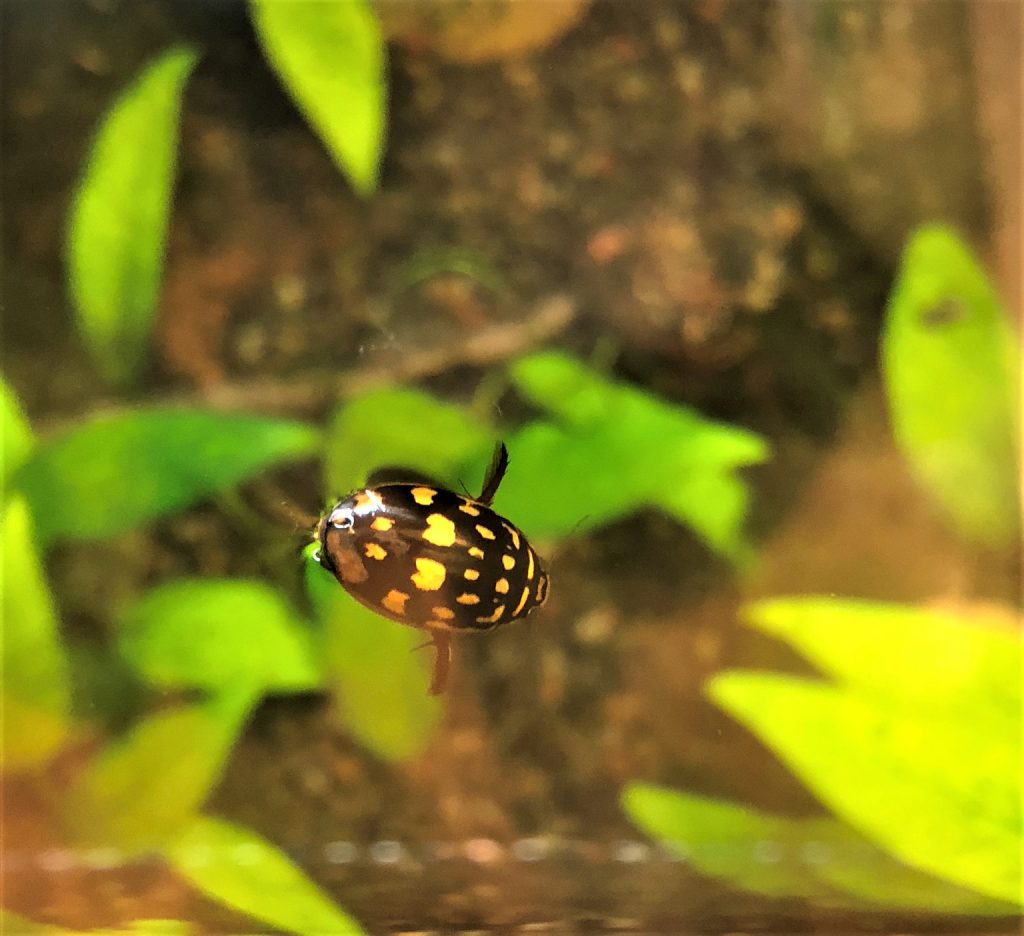
These tiny diving beetles have the ability to crawl, swim, and fly, making them incredibly versatile. They hunt small aquatic invertebrates by quickly diving towards their prey, and fly by gathering oxygen underneath their wings.

Derby’s flower beetle, native to Africa, is recognizable by its shimmery exoskeleton that shifts between hues of red and green. Without a set precedent for caring for these creatures, keepers repeatedly go through the process of trial and error to find what works. They change their diet, shift things in their environment, and find the unique quirks about the insects that help them feel most at home.

Assassin bugs, also native to Africa, prey on animals much bigger than they are. They inject a lethal toxin using their piercing beak and have bright yellow spots to warn of this danger.
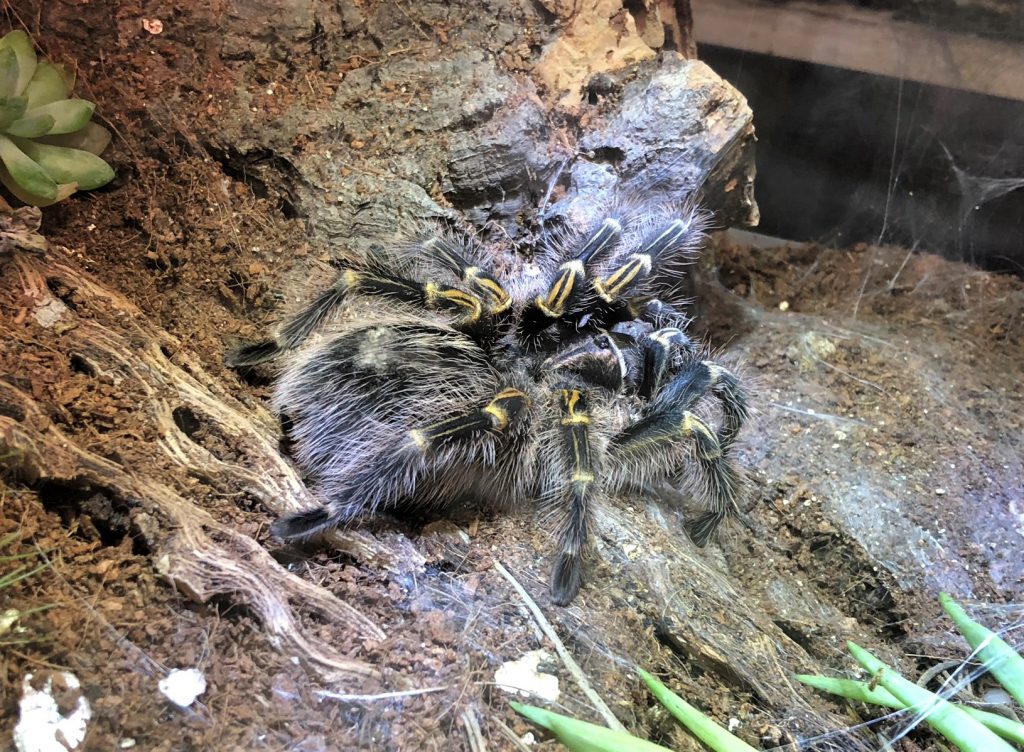
After touring the Insect House, we went behind the scenes to find the area where the insects’ meals are prepared, before moving to another display focusing on tarantulas and scorpions. These creatures were confiscated and were part of the illegal pet trade, which is incredibly harmful to insect populations worldwide. Here, a Chaco golden knee rests in its terrarium, one of many cared for by the Zoo. There are strict safety procedures implemented with so many venomous bugs placed together, ensuring keepers, like Ms. Chang, can interact with them safely.

The first insect we got to meet was a Puerto Rican millipede. Ms. Change even gave us the opportunity to hold the millipedes, letting its hundreds of tiny feet scuttle across our hands. Millipedes have four legs per segment and can have up to 40 segments. This species is one of the many insects used for education, giving students and other learners the unique opportunity of interacting with an animal they may have never seen otherwise or were scared of touching.
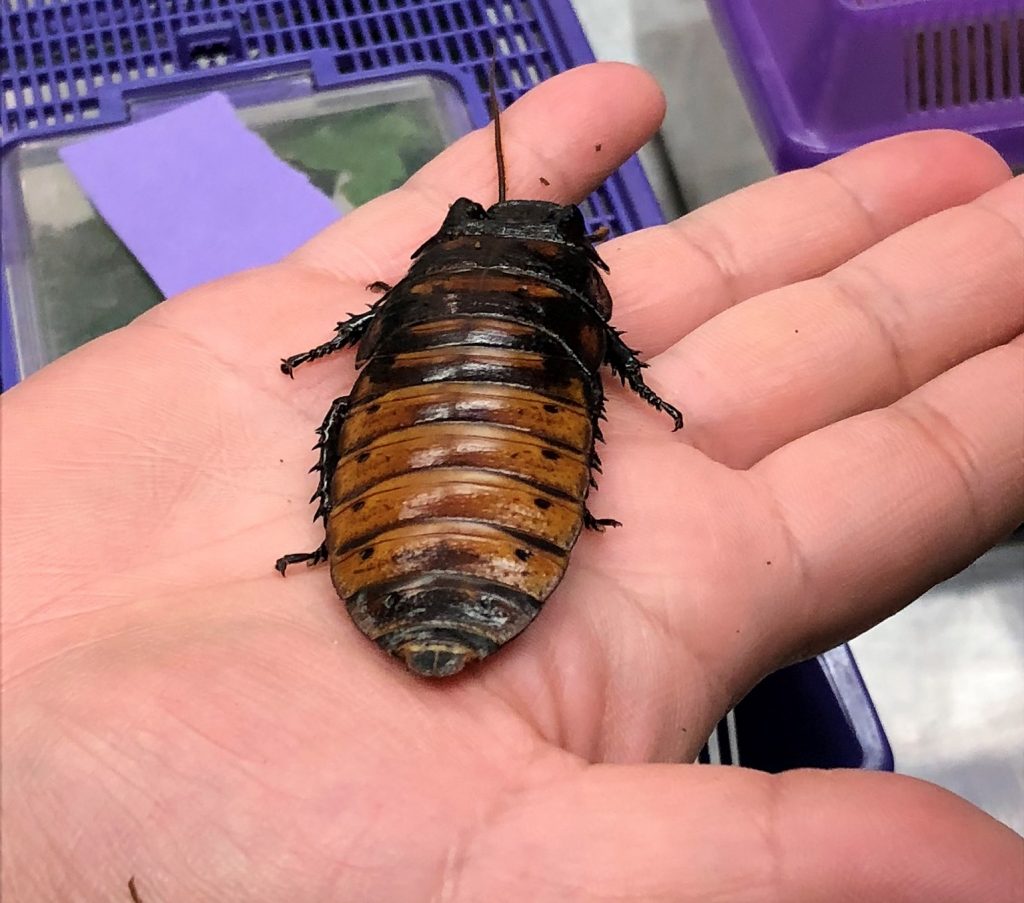
This hissing cockroach calmly rested on Ms. Chang’s hand and remained cool when we touched its smooth exoskeleton. Interactions like these are important in showing people that there’s no reason to be afraid of these insects, and helps clear up the misconceptions that many people have deeply ingrained into their mind.
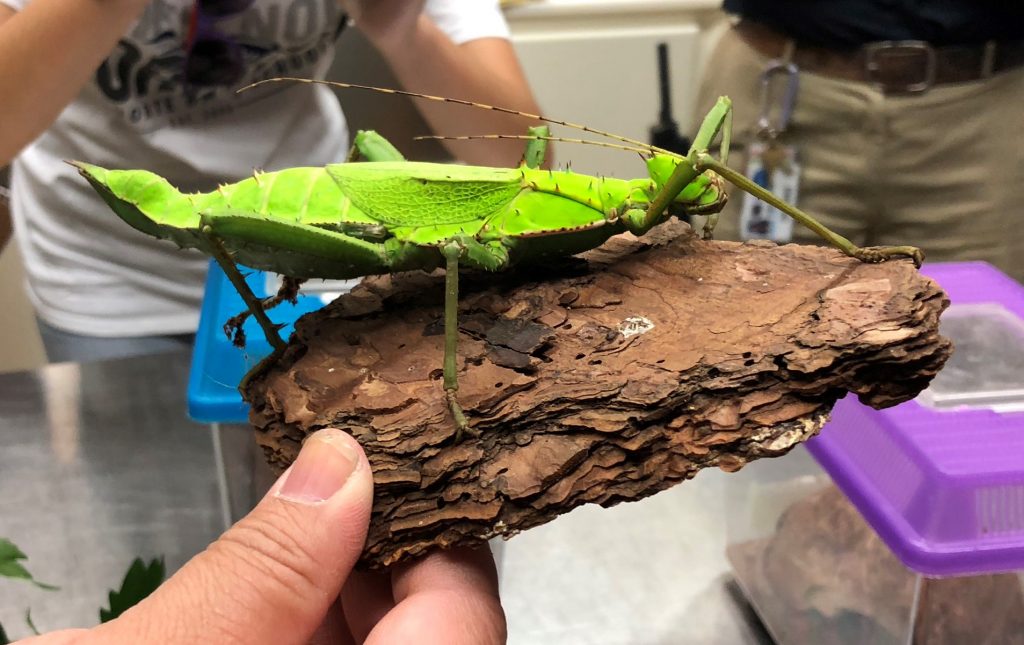
Our friend the jungle nymph returns, this time in plain view without the natural thick cover of vegetation. It remained still and comfortable atop a wooden slab so that we were able to touch its leaf-like abdomen. We were concerned that it might jump at us given its appearance, but Ms. Chang assured us that it is naturally slow-moving, and the quickest it can move is by free falling to the ground.
There is so much more to insects than what society portrays them to be. These marvelous creatures are much more complex than they are given credit for, and dismissing this widespread fear is the first step in appreciating insects for what they truly are.
Jennah, Photo Journalist Team
Week Two, Fall Session 2018


